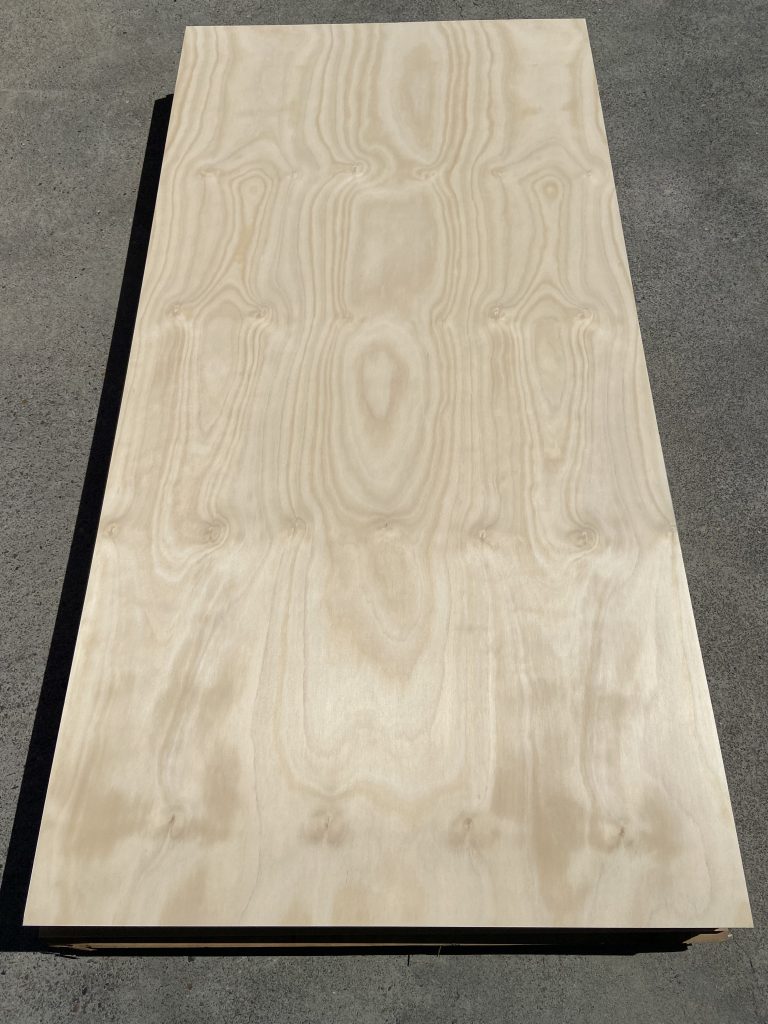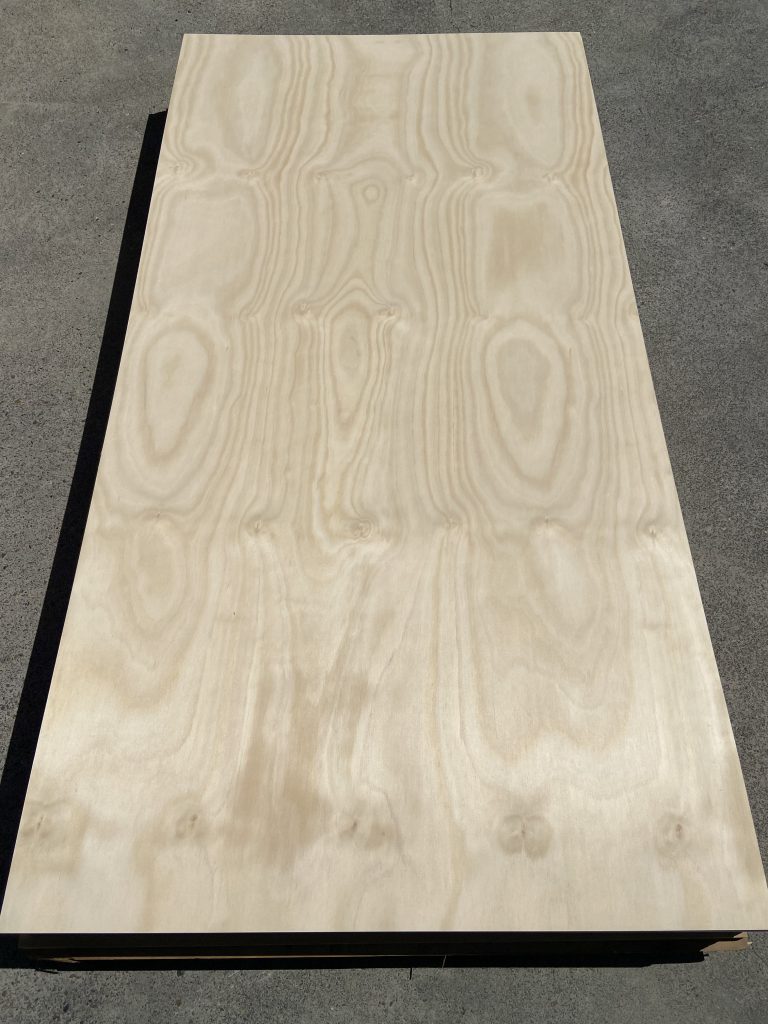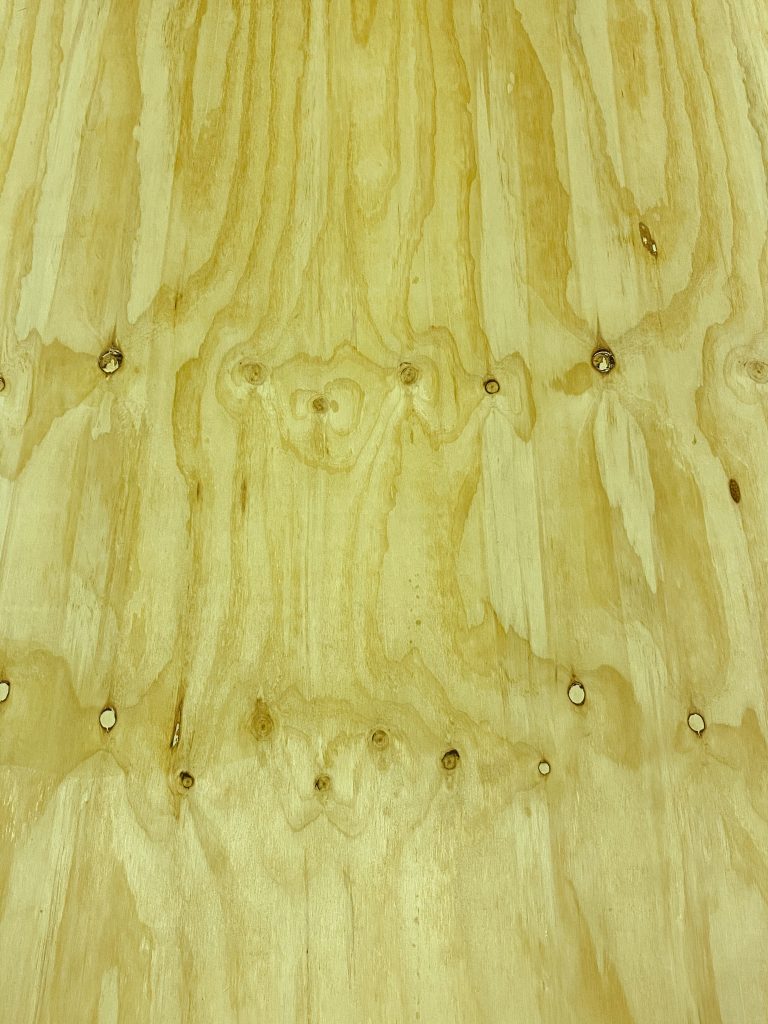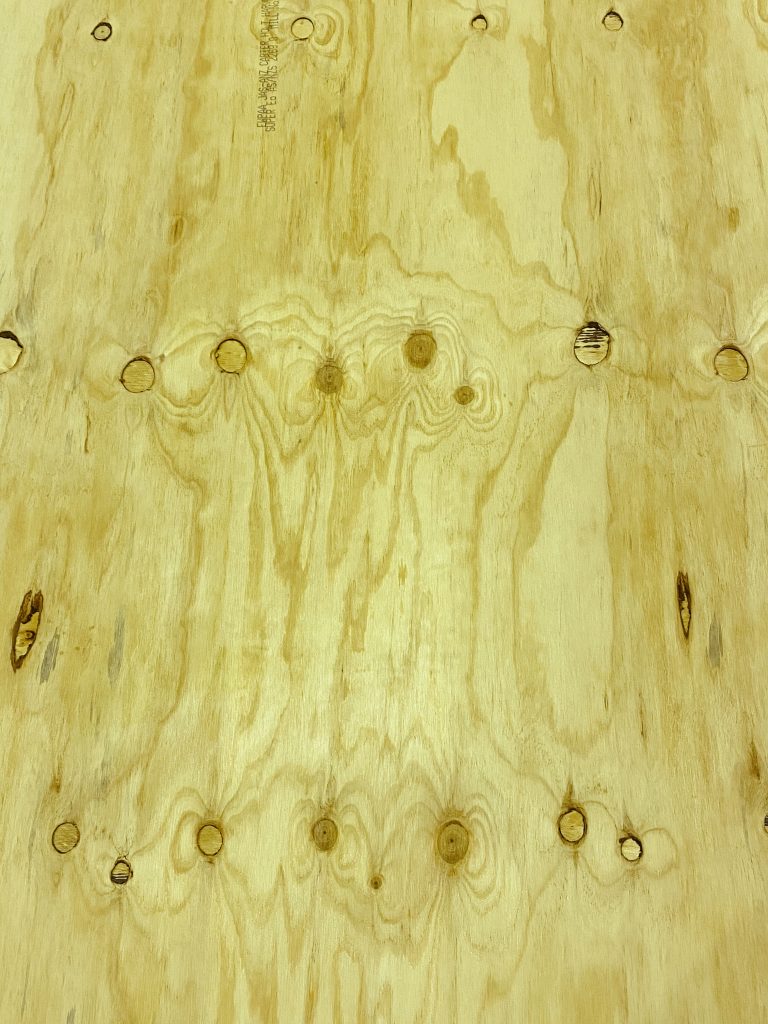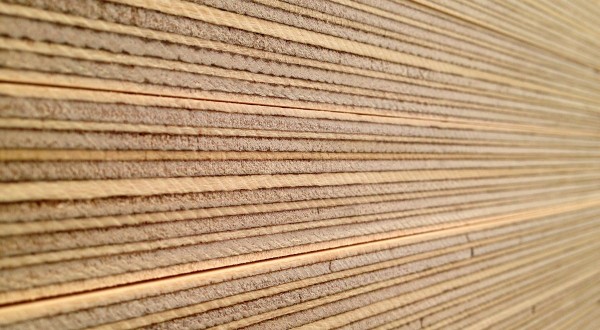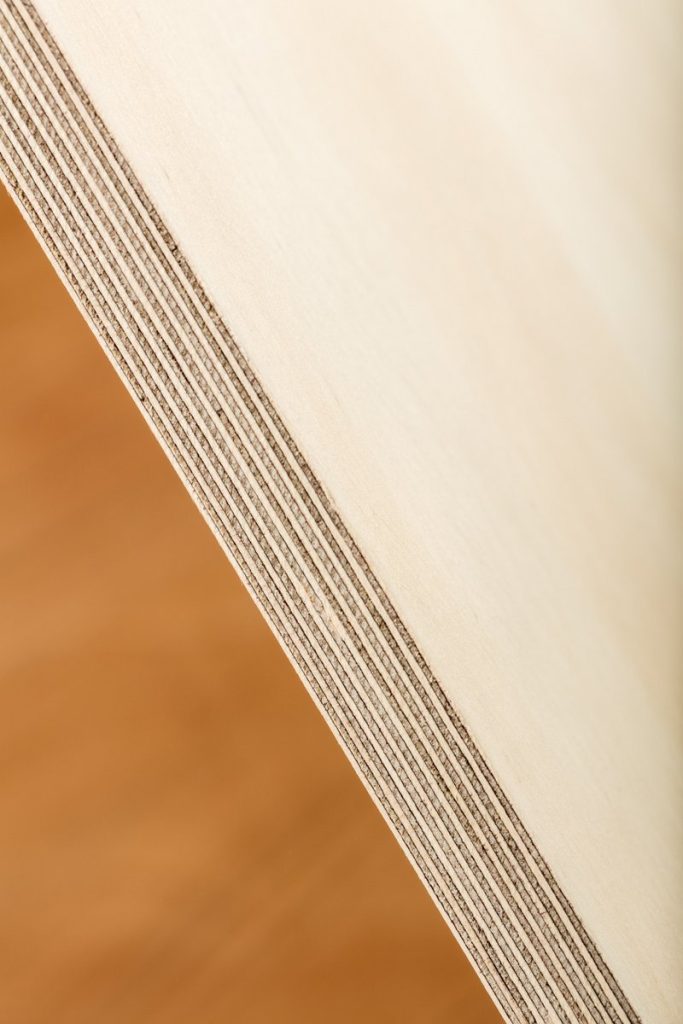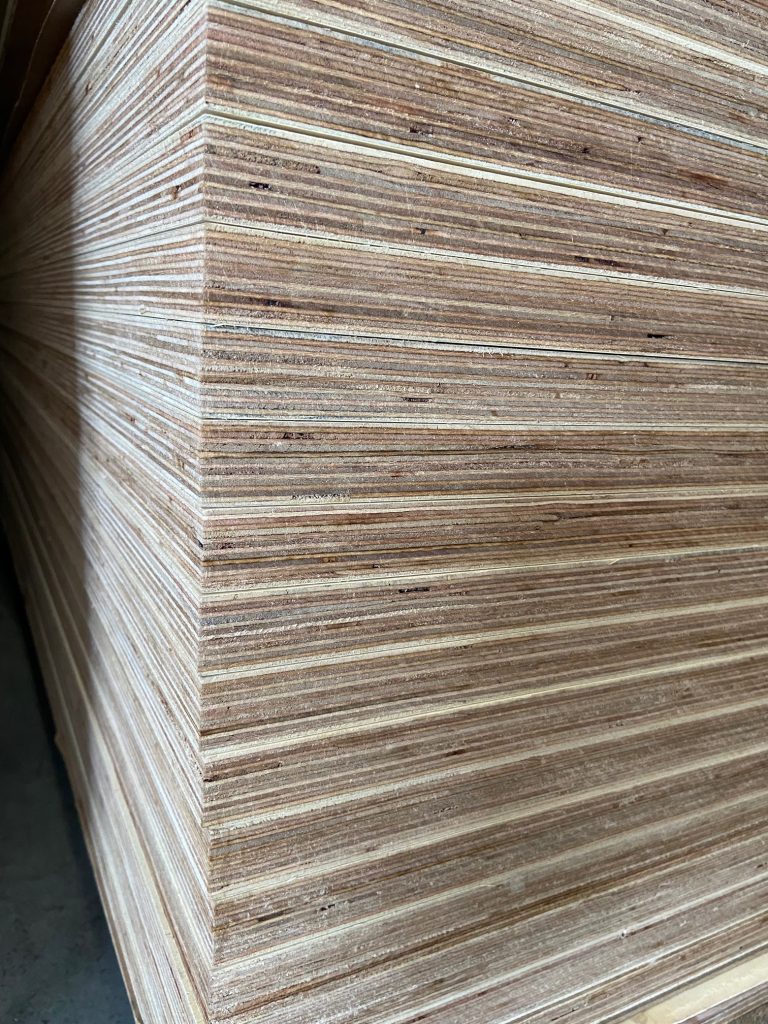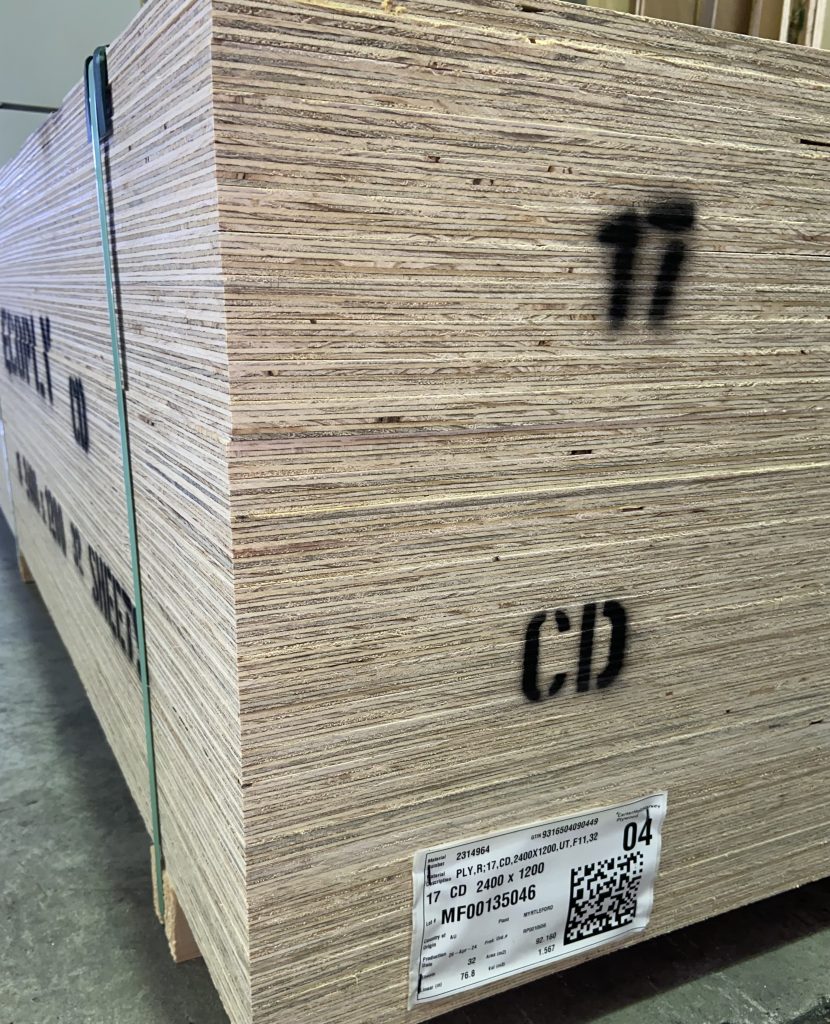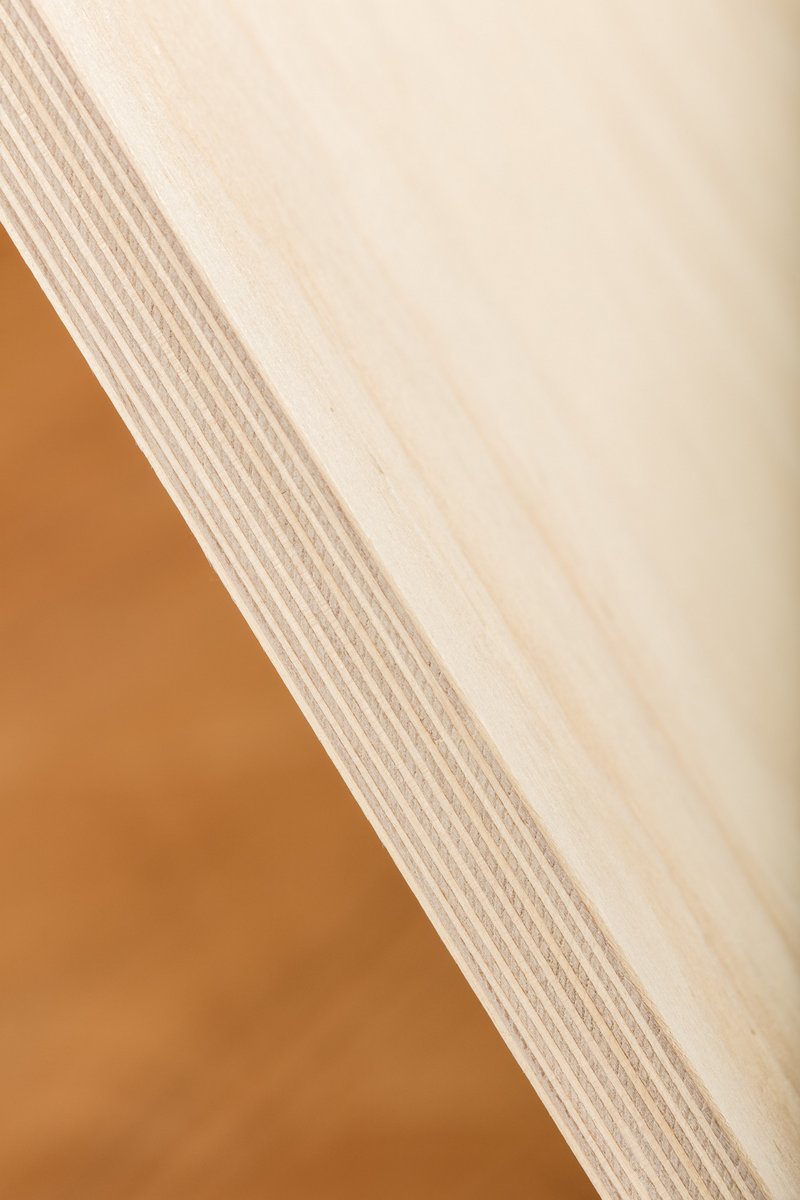Specifications
Plywood is a sustainable natural wood product made of peeled wood veneers laid with an alternating grain at right angles between the plies subsequently bonded together under heat & pressure to produce a flat sheet.
As well as its high panel shear strength, dimensional stability and cross laminated two-way strength, plywood is an excellent reflector of sound.
Plywood facts include information about the different types of face veneers, the glue lines that are available for different applications, available preservative treatment, emissions emitted from the ply and the preservative treatment available for plywood:
How is plywood made?
Face Veneers
The grades of veneer are split into 4 main types, A, B, C & D:
A Grade Veneers
An appearance grade face veneer with no visible defects making it suitable for “clear finishing”. Where surface decorative appearance is a primary consideration, this appearance grade quality should be specified. This includes Austral Premium Ply & Marine Ply.
To read more, please visit A Veneer (Australian Standards)
B Grade Veneers
However not generally recommended for high-end clear staining, it’s better suited for a liming white coating or equivalent for appearance, alternatively utilised for painting. This includes Austral Premium Plywood, Birch Plywood & Hardwood Plywood.
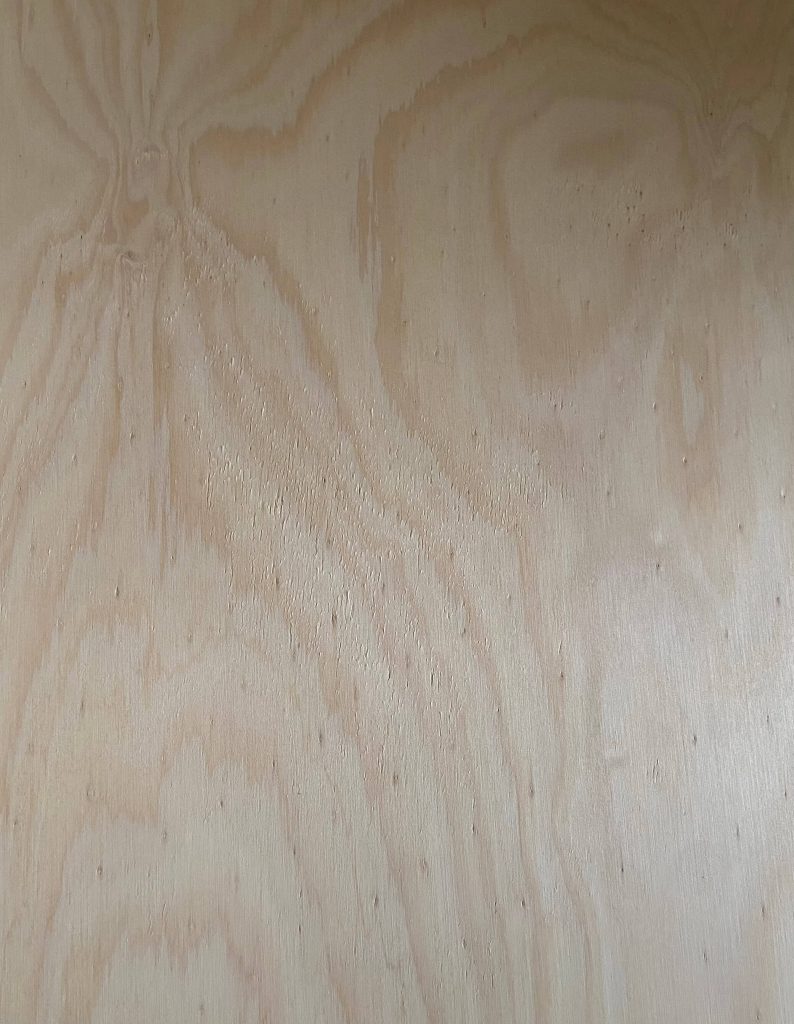
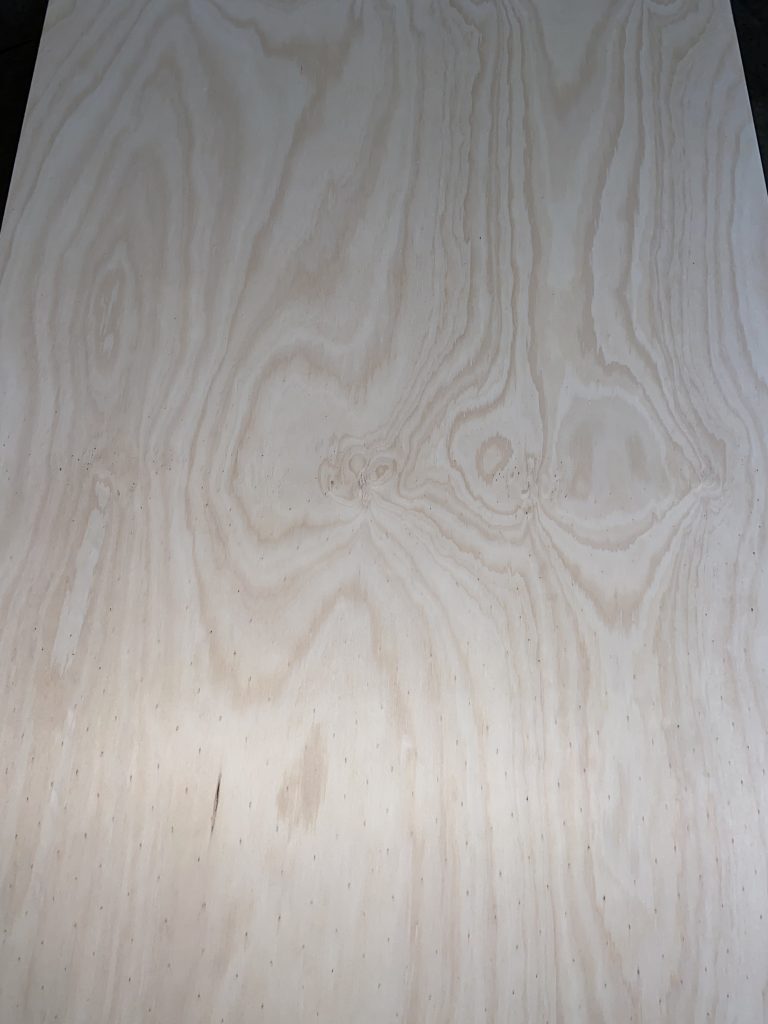
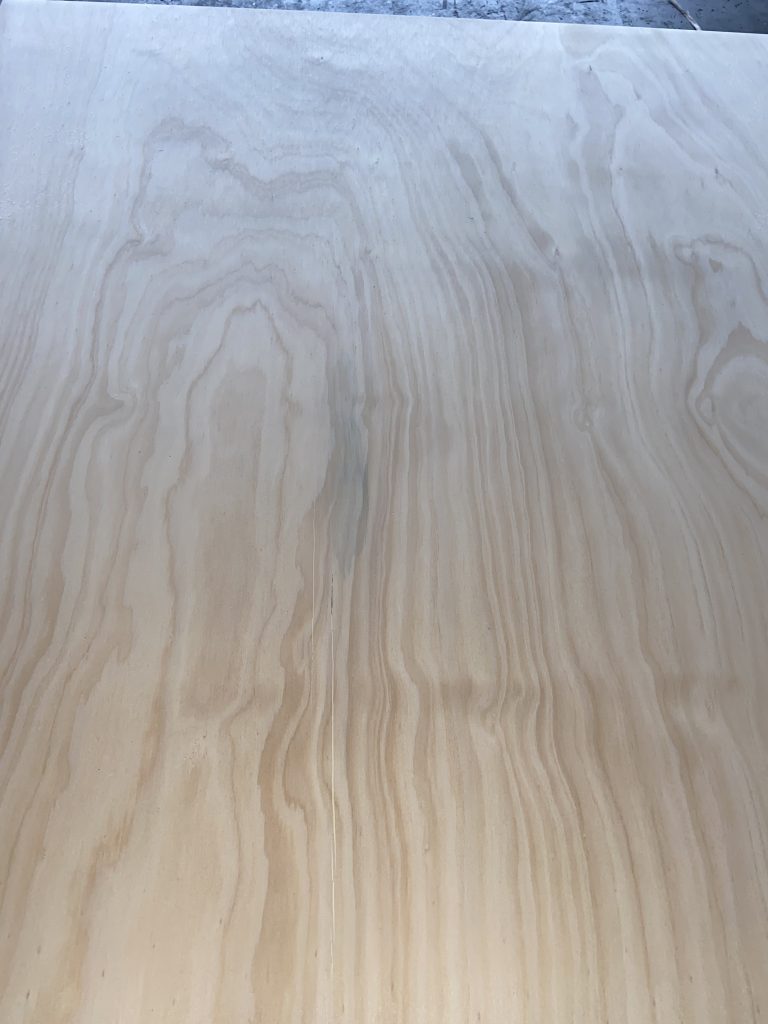
What is allowed on a B grade: roughness, natural texture, blue stain & putty fills. It’s not always present but can be seen on some sheets.
To read more, please visit B Veneer (Australian Standards)
C Grade Veneers
A non-appearance grade face veneer with a solid surface in which all open defects such as holes, knots or splits are filled. For applications requiring a solid non-decorative surface, this face veneer quality is designed specifically for this purpose, such as ply flooring which is to be overlaid with a decorative flooring surface. This includes Flooring, Hardwood Plywood and Structural & Non-Structural Plywood.
D Grade Veneers
A non-appearance grade face veneer in which open imperfections are permitted. For structural and non-structural applications where decorative appearance is not a requirement, this face veneer should be specified. A limited number of knots and knot holes up to 75mm wide are permitted within this veneer specification. This includes Flooring, Hardwood Plywood and Structural & Non-Structural Plywood.
To read more, please visit the EWPAA Website Facts About Plywood and LVL
Gluelines
Type A Bond
Produced from a Phenol Formaldehyde (PF) resin, which sets permanently under controlled heat and pressure. This forms to create a permanent bond that will not deteriorate under wet conditions, cold or heat. This bond is recognisable by its distinct black colour.
Type A bond is specified in AS/NZS 2272 for marine plywood, AS/NZS 2271 for exterior plywood used under conditions of long-term full exposure or under wet or damp conditions.
Type B Bond
Produced from Melamine Fortified Urea Formaldehyde (MUF) resin, which sets permanently under controlled heat and pressure. The exterior plywood standard includes Type B bond which are considered only semi-durable under exposure to weather.
Type C & D Bonds
Both the C and D bond glue lines are both interior bonds. Type A bonded plywood should be used for areas of doubtful moisture conditions, such as areas around vanity units, sinks, and laundry tubs.
Exterior Bond
Produced for exterior use with a phenolic resin adhesive.
To read more, please visit the EWPAA Website Facts About Plywood and LVL
Preservative Treatment
Plywood may be required to resist attack under certain conditions as listed in the below table.
For protection against these attacks, the correct preservative treatment is essential for all types of plywood, whether they are painted or unpainted, that will be permanently exposed to the weather.
The two types of treatment being Veneer Treated as distinct from Envelope Treated.
Veneer Treated – ACQ
Treatment applied via the impregnation of the veneers. Therefore making it a superior method so that cut panels still retain their preservative properties.
ACQ treatment is available in Pine Plywood. Standard sheet sizes are 2400mm x 1200mm in: 12mm, 15, 17 & 19mm.
Envelope Treated – LOSP
Pressure treating the plywood, specifically the outer veneers, ends of the sheets and edges. In comparison to the ACQ treatment, the LOSP treatment may not penetrate through the glue lines to the middle veneers. When cut, LOSP treatment must be re-applied to the cut edge.
LOSP treatment is available on our entire range including Pine Plywood and Hardwood Plywood.
| Hazard Class | Exposure | Resist Attack | Specific Service Conditions |
|---|---|---|---|
| H1 | Inside, above ground | Lyctid borers | Completely protected from the weather and well ventilated, and protected from termites |
| H2 | Inside, above ground | Borers & termites | Protected from wetting and with no leaching |
| H3 | Outside, above ground | Borers, termites & moderate decay | Subject to periodic moderate wetting and some leaching |
To read more, please visit the Forest & Wood Products Australia Guide to the specification, installation and use of preservative treated engineered wood products.
Core Gaps
Marine Plywood
Consists of the highest-grade veneers throughout the plywood with minimal core gaps. This may include jointed veneers utilised in the core that shall comply with Clause 3.1 as per the Australia Standards (A Veneer)
Multiply Plywood (Exterior Glue)
Consists of a selected 1.5mm rotary peeled veneers throughout the ply with minimal core gaps.
Exterior/ Structural Ply
Some core gaps in the laying up of the inner plies ensuring the maximum potential in attaining the full-strength potential across the entire panel for the structural ply.
Multiply Plywood (Interior Glue)
Consists of a selected 1.5mm rotary peeled veneers throughout the ply with minimal core gaps.
Standards
| Standard | Key Features |
|---|---|
| Structural Plywood – AS/NZS 2269 | – A Bond permanent & durable ‘marine’ bond – Structural signified by an F rating, such as F11 ECOPly – Tolerances |
| Marine Plywood – AS/NZS 2272 | – A Bond permanent & durable ‘marine’ bond – Structural signified by an F rating – Composed with high grade core veneers |
| Exterior Plywood – AS/NZS 2271 | – A Bond permanent & durable ‘marine’ bond (fully exposed conditions) – B Bond Melamine Urea Formaldehyde semi-durable resin (semi-exposed applications) – Non-structural |
| Interior Plywood – AS/NZS 2270 | – C Bond Urea Formaldehyde resin (interior use) – Non-structural |
Tolerances
For more information on standards including: tolerances, squareness, straightness, flatness & moisture content, please visit the EWPAA Structural Plywood Design Guide
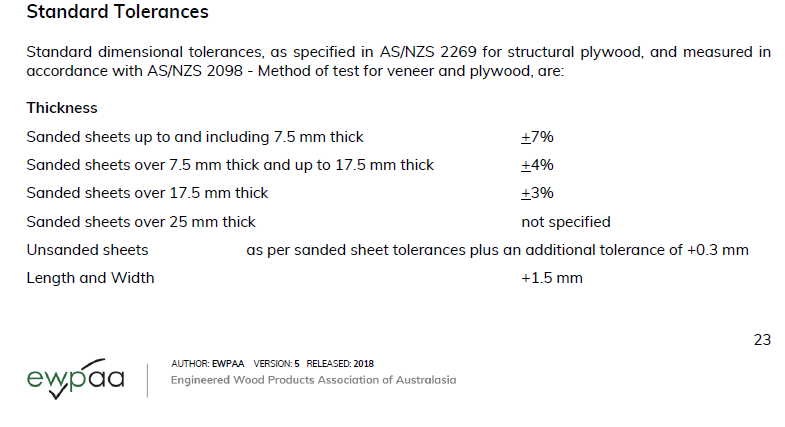

Emissions
All information within the following “Emissions” section is gathered from EWPAA: Technical Note, Formaldehyde Emissions from Plywood and Laminated Veneer Lumber.
This section refers to on-going industry wide testing of formaldehyde emissions from EWPAA branded products, summarising the survey completed by the EWPAA that emissions from Type A Bonded products, with phenolic adhesives, represent over 90% of EWPAA production which have effectively zero emissions.
Formaldehyde
Formaldehyde is a colourless, strong smelling gas that occurs naturally within the environment and is emitted by processes such as decay, combustion and naturally occurs in all timber species.
Formaldehyde Emissions
Plywood is manufactured to two basic adhesive types: Phenol Formaldehyde (PF) and amino plastic, which includes Melamine Urea Formaldehyde (MUF) and Urea Formaldehyde (UF).
There are vast differences in the chemistry between the two types of adhesives. With PF bonded products, after any low-level residual formaldehyde from the manufacturing process has dissipated within a few days, they do not emit formaldehyde.
PF adhesive, being identifiable by its black colour, is called Type A under the Australian and New Zealand ply standards as is used in the manufacture of structural plywood, marine plywood exterior (Type A) products.
In both Europe and the United States, products that are bonded with PF adhesives are classified as non-emitting and are exempt from formaldehyde emission regulations.
Amino plastic bonded products tend to have higher residual free formaldehyde levels and can emit low levels of formaldehyde.
Technical Note Conclusion
Formaldehyde emissions from EWPAA certified products are well below acceptable exposure limits specified by Workplace Australia and do not constitute a health risk.
The formaldehyde emission classes in the Australian/ New Zealand Standards are detailed in the below table. Products labelled with emission classes E0 and E1 have extremely low formaldehyde emissions.
| Emission Class | Formaldehyde Emission Limit (mg/l) | Formaldehyde Emission Limit (ppm)* |
|---|---|---|
| Super E0 | Less than or equal to 0.3 | Less than or equal to 0.024 |
| E0 | Less than or equal to 0.5 | Less than or equal to 0.04 |
| E1 | Less than or equal to 1.0 | Less than or equal to 0.08 |
* Based on a test chamber volume of 10 litres, zero airflow during the 24hr test cycle, molecular weight of formaldehyde 30.03 and the number if microlitres of formaldehyde gas in 1 micromole at 101 KPa and 298K
To read more, please visit the EWPAA website & APA Tech Bulletin on Formaldehyde.
Sustainability
For every ton of wood grown, a young forest produces 1.07 tons of oxygen and absorbs 1.47 tonnes of carbon dioxide, referenced from the link from the APA.
Page 2 APA Sanded Plywood Product Guide

